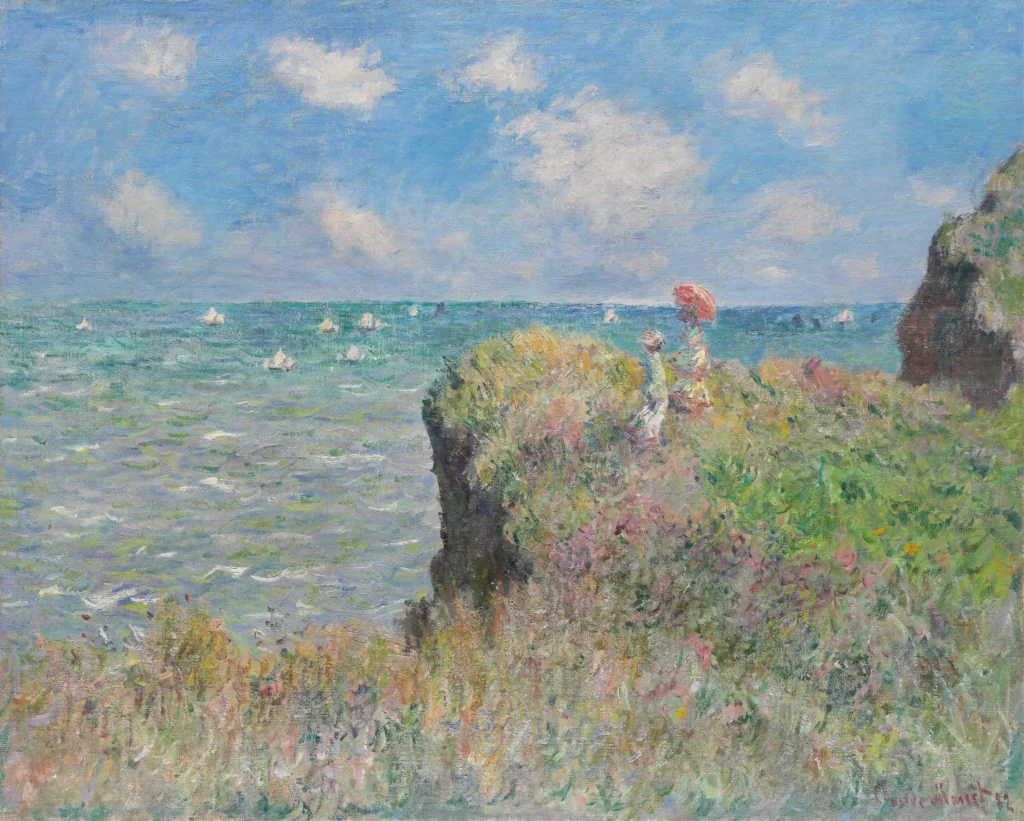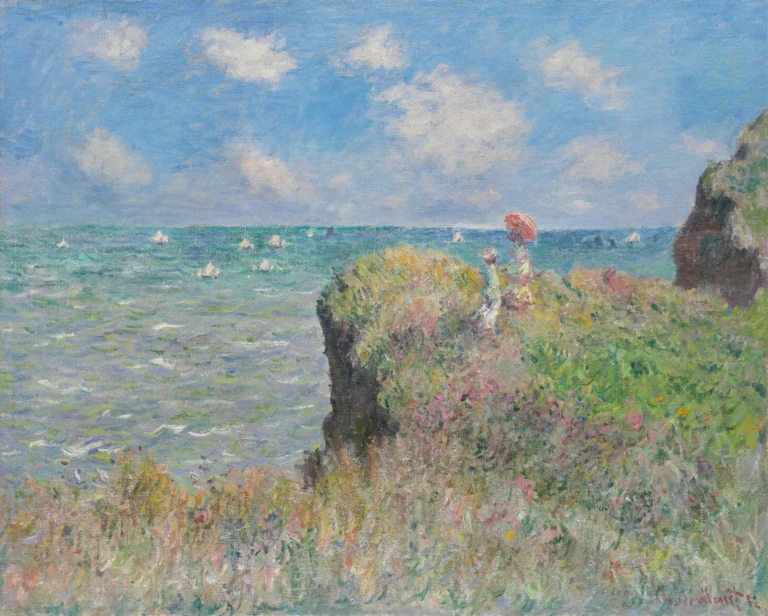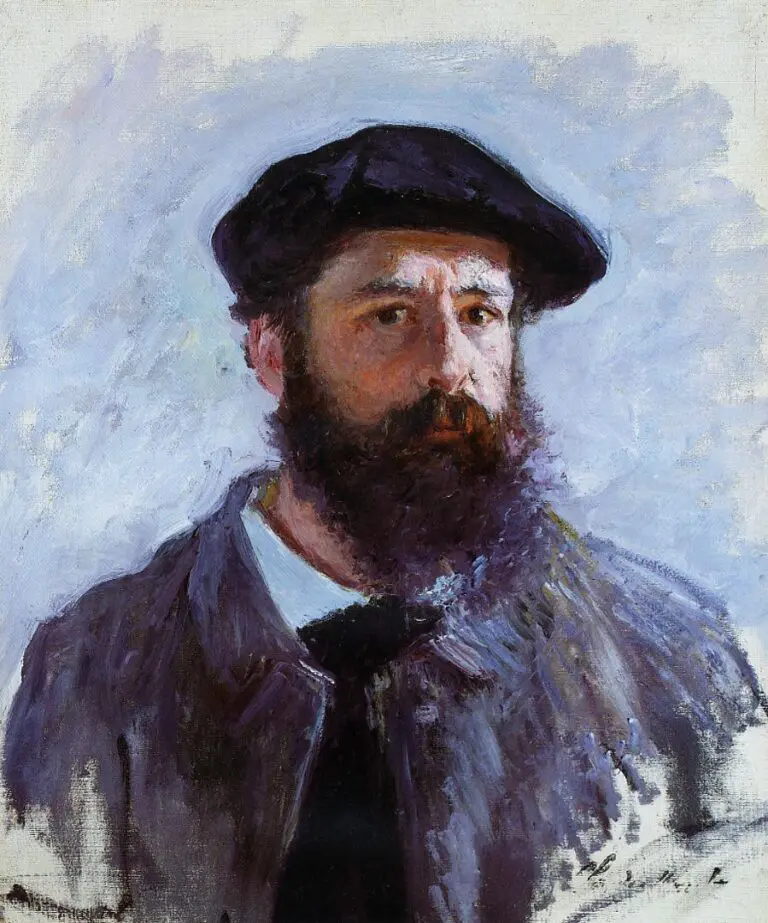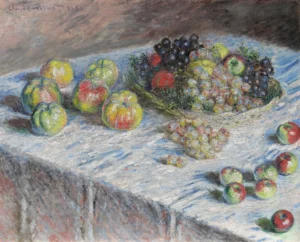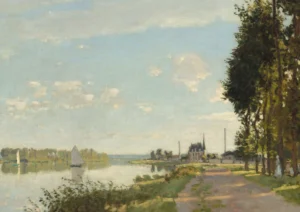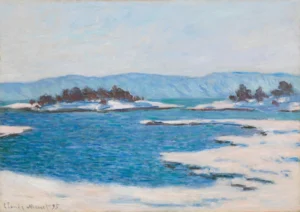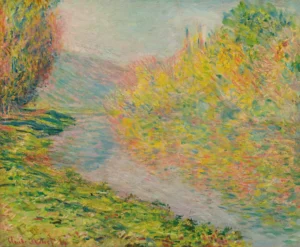Cliff Walk at Pourville (1882)
Cliff Walk at Pourville is a captivating 1882 painting by Claude Monet, featuring two young women walking along a cliff in a vibrant coastal landscape of Normandy. This artwork showcases Monet's distinctive use of color and texture, blending the figures harmoniously with the scenery. Influenced by his surrounding beauty and personal struggles, Monet’s innovative brushstrokes are on full display, conveying movement and light. The painting not only reflects the tranquility of nature but also serves as a testament to Monet's resilience as an artist during challenging times.
Year 1882
About the Artwork
In February 1882, Claude Monet sought refuge in the picturesque village of Pourville, Normandy, to escape the weight of his personal losses, including the death of his wife, Camille. The beauty of the coastal landscape inspired Monet, and he spent time exploring and capturing this serene environment on canvas. During this period, he was accompanied by Alice Hoschedé and her children, fostering a relationship that would evolve over the years. Cliff Walk at Pourville features two of Alice's daughters, Marthe and Blanche, strolling gracefully along the cliffs, reflecting a moment of peace amidst the artist's struggles. Monet's technique combines lively brushwork with an emphasis on the interplay of light and color, making this piece a quintessential representation of Impressionism that continues to resonate with viewers today.
Did You Know
The creation of Cliff Walk at Pourville coincided with a poignant time in Monet’s life, marked by the loss of his wife and the challenges of his personal relationships, which deeply influenced his artistic vision.
Monet’s innovative brushwork in Cliff Walk at Pourville is characterized by short, brisk strokes that capture the movement of the grass and the flowing dresses of the figures, emphasizing the vibrant interplay of light and shadow typical of Impressionism.
The choice of Pourville as a location reflects Monet’s preference for the peaceful coastal scenes over cityscapes, allowing him to infuse this work with a tranquil and contemplative atmosphere, a hallmark of his later works.




